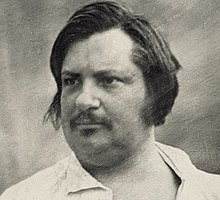Morel, the master of the chain
| Movie | |
|---|---|
| Original title | Morel, the master of the courtesan's splendor and misery chain |
| Country of production |
Germany , Austria |
| original language | German |
| Publishing year | 1920 |
| length | approx. 219 (both parts of the German version), approx. 234 (all three parts of the Austrian version) minutes |
| Rod | |
| Director |
Louis Ralph Conrad Wiene |
| script | Louis Ralph |
| production |
Rudolf Meinert for Decla-Film-Gesellschaft Holz & Co. (Berlin) International-Film (Vienna) |
| occupation | |
and Mizzi Berger , Viktor Kutschera , Karl Etlinger , Louis Nerz , Rudolf Leicht , Philine Weigert , Maria Dietrich , Emmy Schleinitz , Helene Jamrich , Gladys Zen-Door , Axel Plessen | |
Morel, the master of the chain (German and Austrian distribution title) or Morel, the master of crime and glamor and misery of the courtesans (Austrian subtitle) is a fiction film from the year 1920 that was probably made in a German-Austrian joint production. It was based on the novel Glamor and misery of the courtesans by Honoré de Balzac , directed by Conrad Wiene and Louis Ralph ; the latter also took on the title role of Morel. The role names in the film largely do not correspond to the names of the protagonists of the literary model.
action
Morel, once a master of crime, had to serve a long prison street for his crimes. But he manages to escape the Bagno . One day he meets the young poet Leon Montaguard. When he tries to take his own life, Morel is there in time and saves the young man. Sponsored by Morel, Leon soon rises to the highest social circles in Paris. Morel strives for Leon to achieve everything that the outlawed ex-convict must remain socially denied. There Leon becomes a lover of ladies of the haute volée. In reality, however, he is in a relationship with the courtesan Cecile, who was once put into a monastery by Morel so that she might mature into a decent young lady there.
When Cecile meets the much older Baron Boudet, he falls in love with her. Morel sees this as a good opportunity to run this rich man, a banker, with every trick in the book. He lets all reason go against Cecile and throws himself into expense in order to win Cecile for himself. Cecile, who soon realizes how terrible her double game, encouraged by Morel, is, then kills herself, broken inside. In the meantime, the police find out what is going on in Morel, and his protégé Leon, who was supposed to consolidate and expand his social status through Ceciles von Boudet, is also targeted by the state. She finally strikes and arrests Morel and the unsuspecting Leon as his accomplices.
Only now, in police custody, does Leon realize that for his sponsor, the unscrupulous Morel, he was only a means to an end. From this realization that the only friend he believed he had in Morel is a dishonorable and sly villain, deeply affected, after Cecile, Leon also kills himself in prison. Now Morel is all alone and collapses in the face of his misdeeds. It turns out that Leon was Morel's son and he knew nothing of this fact. Morel surrenders to his fate, whatever may happen now.

Production notes
Morel, the master of the chain , was probably created in the winter of 1919/20 in the Berlin Lixie Atelier in Berlin-Weißensee . In Germany, the Balzac implementation was shown in two parts - 1st section: " The chain ", 2nd section: " Splendor and misery " - and had a length of around 2300 meters (part 1) and around 2195 meters , divided into seven acts each. The Viennese version had 15 acts, divided into three parts (titles: " The Chain", "The Marionettes", "Shine and Misery "), each around 1,600 meters long.
The German performance of the first part took place at the end of March 1920 in the Marmorhaus , the second part in the same place on April 2, 1920. It was not until August of the same year that the film passed the German film censorship. In Austria, the three parts started on September 24, September 28 and October 1, 1920. A youth ban (in Austria: school ban) was issued in both countries.
The Viennese outfitter Hans Berger designed the film structures and also assisted the two directors.
criticism
Paimann's film lists summed up: “Material, photos and play excellent, scenery very good. (A hit.) "
Individual proof
- ↑ Morel, the master of the chain in Paimann's film lists ( Memento of the original from August 8, 2017 in the Internet Archive ) Info: The archive link was automatically inserted and not yet checked. Please check the original and archive link according to the instructions and then remove this notice.